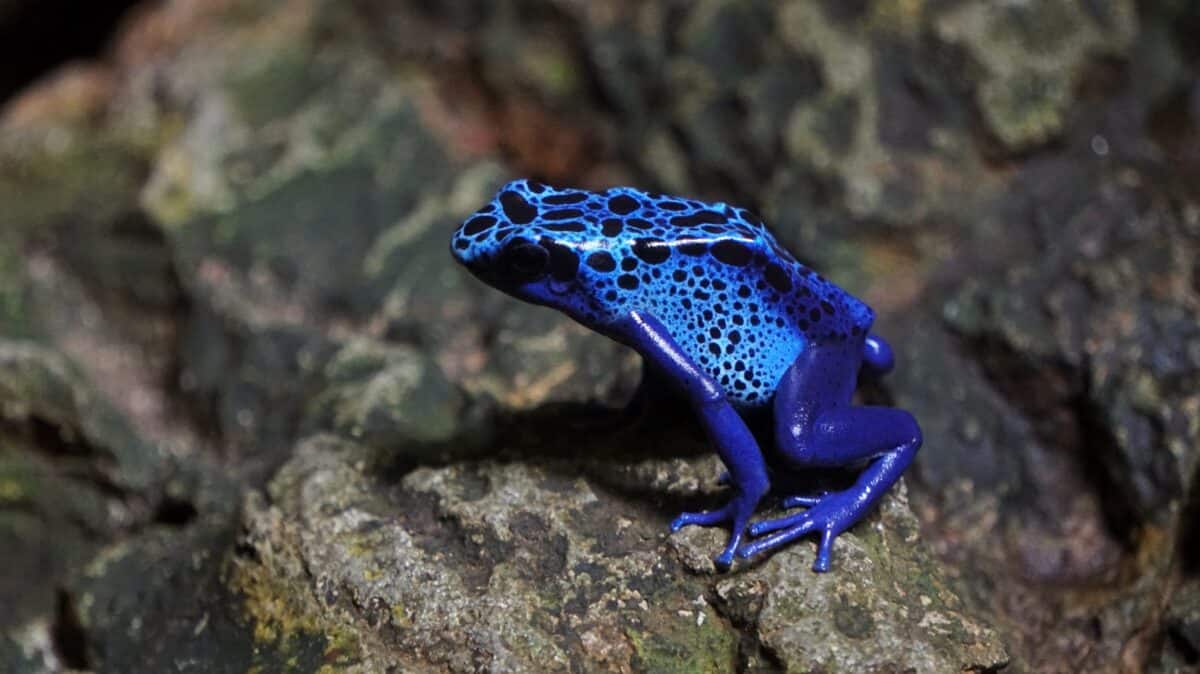The animal kingdom is vast and diverse, with creatures that have evolved fascinating and unique ways of perceiving their surroundings. Some animals possess extraordinary vision capabilities, seeing the world in ways that humans can barely imagine. From detecting ultraviolet light to perceiving polarized light, these animals give us a glimpse into a world beyond human perception. Let’s delve into the incredible and varied ways these ten animals see the world differently from us.
Mantis Shrimp

The mantis shrimp holds the crown for the most complex vision system in the animal kingdom. Unlike humans, who have three types of color receptors, mantis shrimps boast an astonishing 12 to 16 color receptors. This allows them to see a vast spectrum of colors, including ultraviolet light. Their ability to detect polarized light adds to their incredible visual toolkit, helping them find prey and communicate with other mantis shrimps.
Bees

Bees are indispensable pollinators, and their vision plays a crucial role in this task. They perceive ultraviolet light, which humans cannot see, enabling them to detect patterns on flowers. These hidden patterns often guide bees to nectar, ensuring effective pollination. This ultraviolet vision aids their navigation, helping them find their way back to the hive after foraging trips.
Birds of Prey

Birds of prey, such as eagles and hawks, possess extraordinarily sharp vision, allowing them to spot tiny prey from great distances. They have a higher density of photoreceptor cells in their retinas compared to humans, giving them a high-definition view of their surroundings. This exceptional sight is vital for hunting, as it enables these birds to see even the slightest movement on the ground far below.
Cuttlefish

Cuttlefish are masters of camouflage, and their vision plays a significant role in their survival. They can perceive polarized light, a skill that helps them detect contrasts in the water that are invisible to the human eye. This ability is crucial for hunting and communication, allowing cuttlefish to sneak up on prey or signal to mates using subtle changes in their skin patterns.
Butterflies

Butterflies are known for their vivid colors, but their vision is equally spectacular. They have up to five types of photoreceptors, enabling them to see a wide range of colors, including beyond the visible spectrum. Their ability to perceive ultraviolet light helps them spot mates and locate flowers with rich nectar, essential for their survival and reproduction.
Chameleons

Chameleons have a unique set of eyes that allow them to observe two different directions at once. Each eye can rotate and focus independently, giving them a full 360-degree view of their environment. This remarkable vision helps them hunt insects and avoid predators, making them one of the most efficient visual predators in the animal kingdom.
Snakes

Some species of snakes, like pit vipers and pythons, have the ability to detect infrared radiation, or heat, emitted by warm-blooded prey. Special pit organs located between their eyes and nostrils sense temperature changes, allowing these snakes to accurately strike their prey even in complete darkness. This heat vision is an invaluable adaptation for hunting nocturnally.
Dogs

While dogs don’t have the brightest eyesight, they compensate with a keen sense of smell and the ability to see in low light. Dogs have more rod cells than humans, enhancing their night vision and motion detection capabilities. This makes them proficient at navigating and hunting at dusk or dawn, when their prey is most active.
Octopuses

Octopuses are the masters of disguise in the ocean, capable of changing color and texture at will. Their vision includes polarization detection, allowing them to see variations in light waves that humans perceive as glare. This helps them communicate with other octopuses and blend seamlessly into their surroundings, avoiding predators and sneaking up on prey.
Frogs

Frogs have a unique vision adaptation that allows them to see both above and below the water simultaneously. Their eyes are adapted to adjust for refraction differences at the water’s surface, giving them a seamless view of their dual environments. This ability is crucial for spotting both aquatic prey and terrestrial threats.
Conclusion

The diversity of vision in the animal kingdom demonstrates the unique ways in which different species have evolved to interact with their environments. From infrared detection in snakes to ultraviolet vision in bees, these animals showcase remarkable adaptations that allow them to navigate, hunt, and survive in their niches. While humans rely on technology to enhance our limited perception, these animals view the world in ways that are both fascinating and inspiring, reminding us of nature’s incredible ingenuity.
- The Biggest Freshwater Fish Ever Discovered - August 10, 2025
- Meet the Lizard That Can Breathe Underwater for Over 15 Minutes! - August 10, 2025
- The Most Shark-Infested Waters in the United States - August 10, 2025

